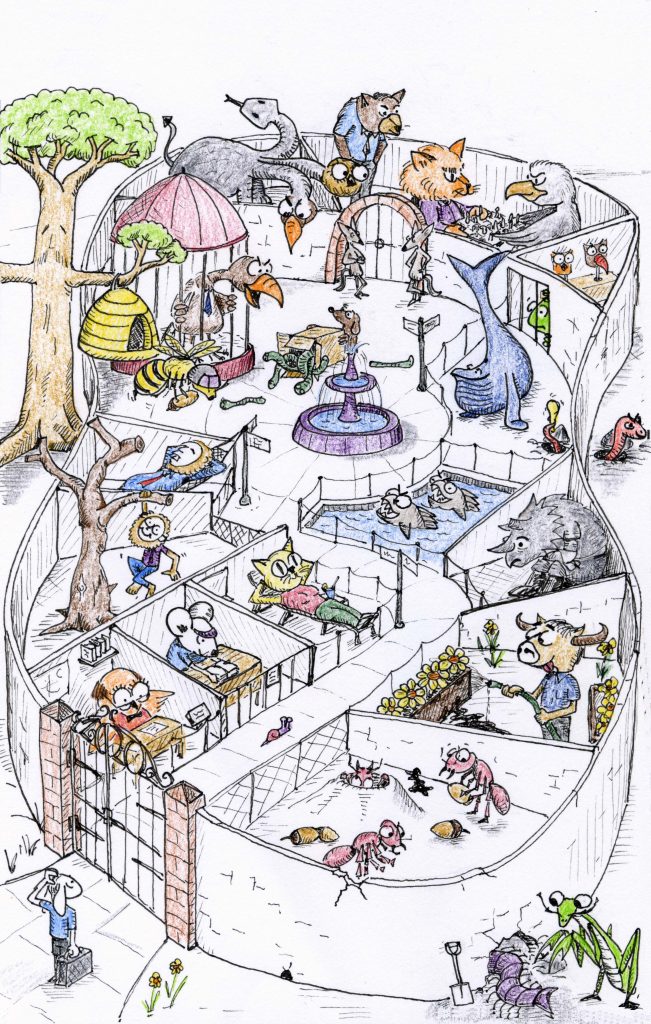People often ask me about the origins of the cover image on The Organizational Zoo. 
Although it is a LONG story, in short it took several drawings over several months to get the message right. We wanted to portray the behaviours people encounter on their career path through a typical organisation.
You can see the kid (naive recruit) about to enter the front gate of the zoo (organisation) and as one would expect the Owl (eternal mentor) ready to greet them at the gate. Many of the basic tactical behaviours are more heavily represented at the early stages of the career path (central walkway) whilst the the more mature and strategic behavioural styles dominate the top of the zoo.
The highly political rattlesnake can’t decide if they want to be in or out of the zoo, the change resistant triceratops has found a corner to mope about the good old days whilst the pestiferous insects clearly are trying to bust in. Quercus (the majestic Oak) is creating energy from outside and providing shelter for the inhabitants. Each animal finds their optimal niche (except the unicorn, that is “perfect manager”, which of course doesn’t exist). Ultimately, the culture of the organisation is governed by the types of animals you have, where they are in the hierarchy and how they interact.
A good leader manages is aware of the behavioural interactions and leads the environment rather than being a victim of it. It is possible to enhance your performance (individuals, teams and organisation) by proactively choosing which animals get to impact the environment through active conversations about what behaviours are appropriate for each context. It is OK to be critical (vulture, piranha) in a risk management analysis, but not in a brainstorm. It is not about which is right and wrong animals – it is about being the right animal in the right context and being constructive about the animal interactions.
An astute person manages their own animals to interact most productively with others animals to generate more value and desired outcomes. Consequently they flow more quickly up the hierarchy and generate greater trust and stronger relationships.
How proactively and consciously do you think about which animals you should be in each situation to achieve your desired outcomes?



 Creative Commons License
© Arthur Shelley 2013 - 2024
Creative Commons License
© Arthur Shelley 2013 - 2024
This image reveals more each and every time I see it.
The Triceratops perspective becomes narrower as the walls converge. The dinosaur is knowledgeable, yet has a narrow minded perspective of how they communicate their knowledge. It looks like they are locking people out – when they could be learning new ways to let people in.
Thank you for sharing some of the story behind this image.